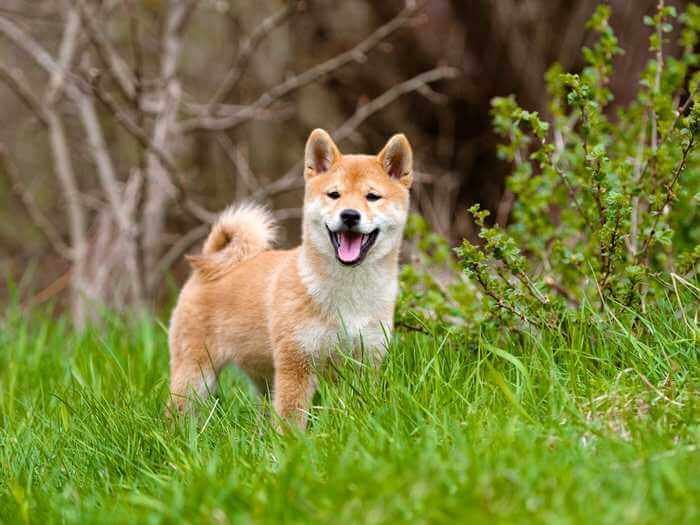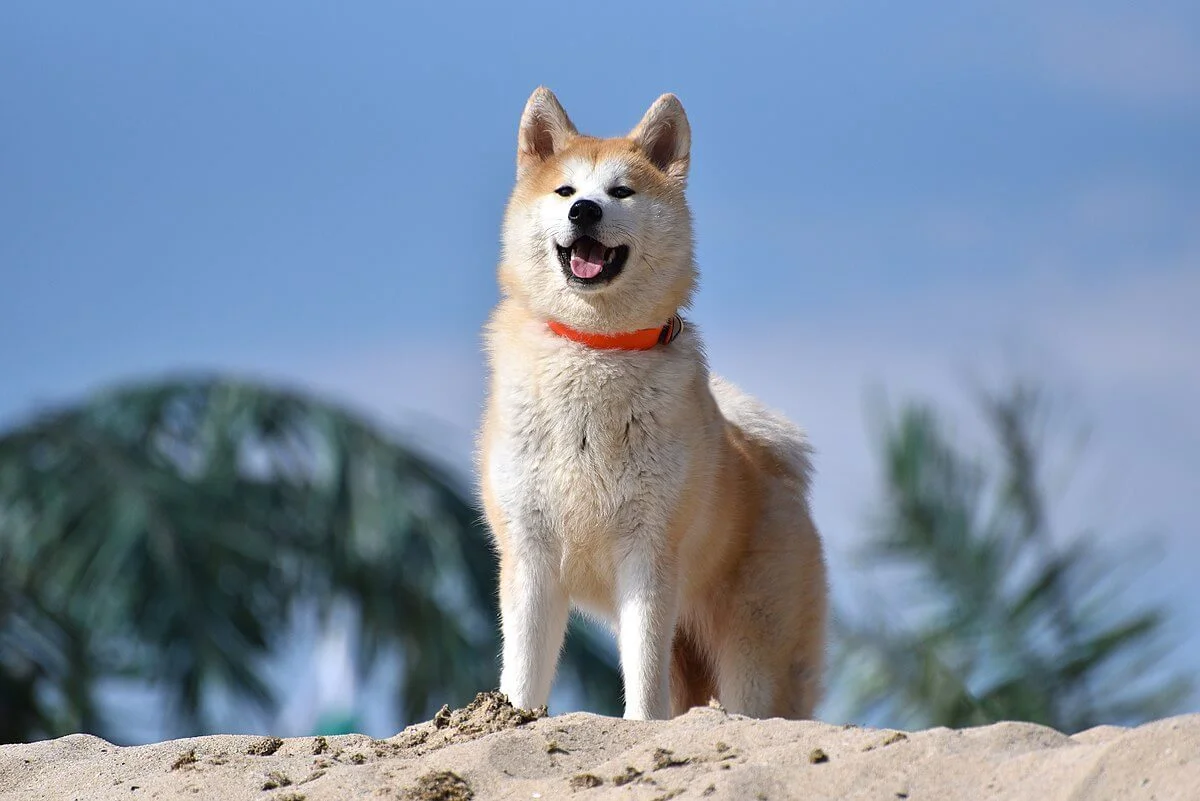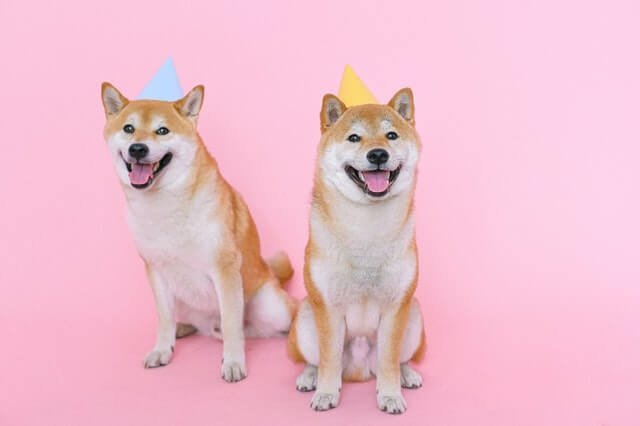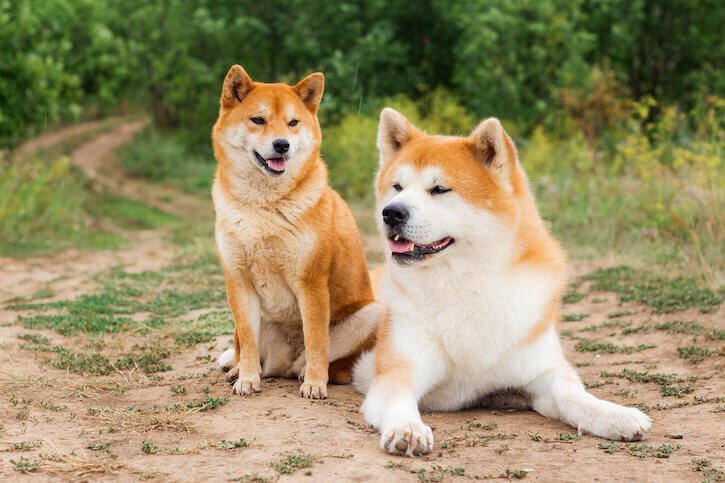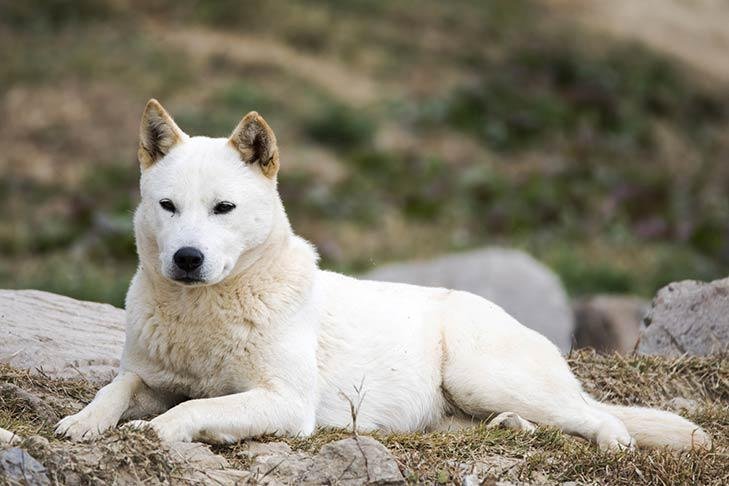Dealing With Glaucoma in Shiba Inus – How severe it is?
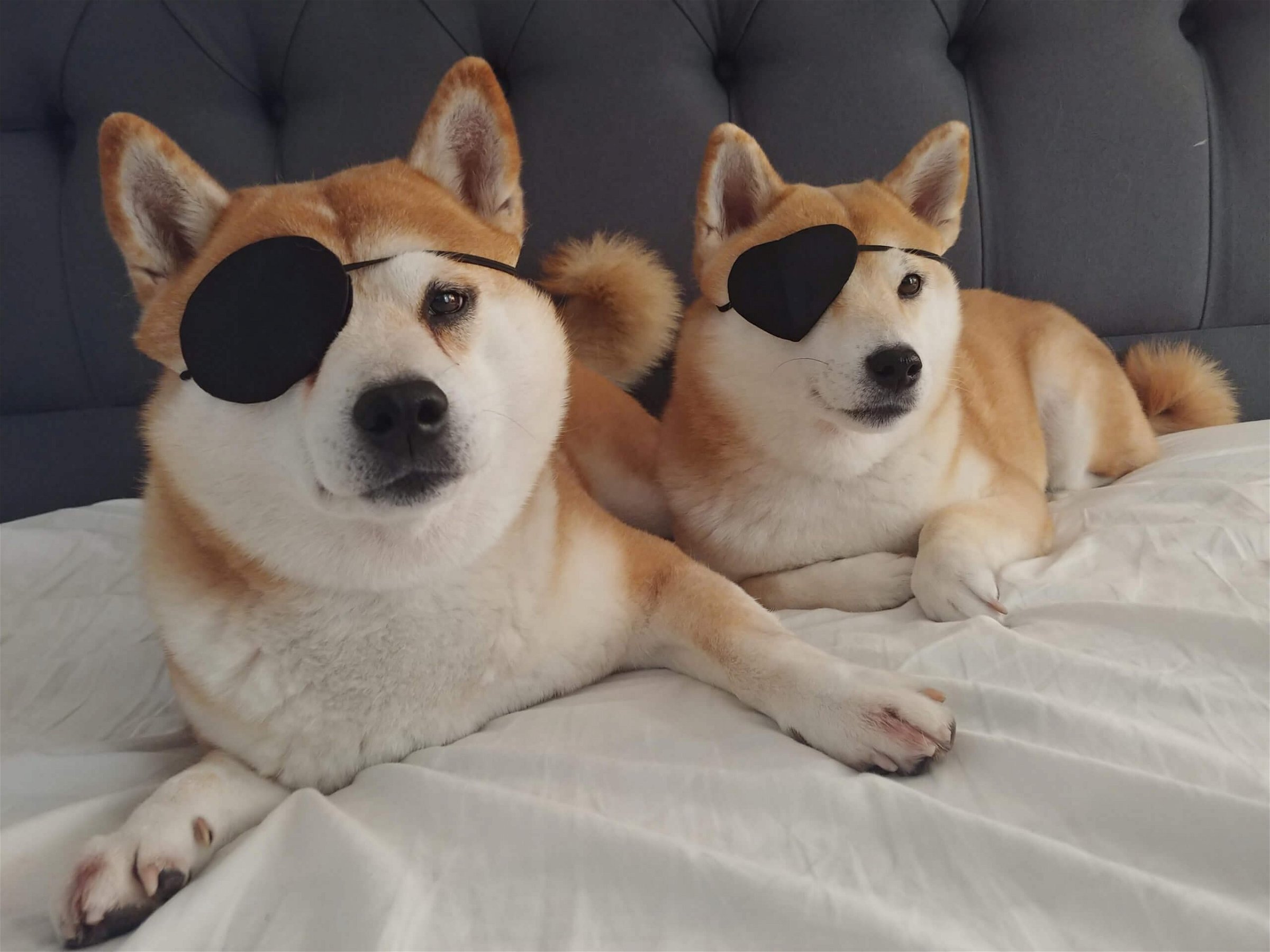
Glaucoma is a disease that causes the pressure inside your dog’s eye to rise and damage the optic nerve and other parts. Glaucoma can lead to blindness if it’s not detected early and treated with medication.
Glaucoma in dogs is more commonly found amongst older breeds and breeds with a long and narrow shape to their eyes (such as the Shiba Inu).
Glaucoma develops due to fluid building up inside the eye, which creates pressure. Medications, surgery, or both can treat Glaucoma in dogs; if Glaucoma is left untreated, it will result in blindness.
Within this article, I will go over Glaucoma in Shiba Inu, how it’s diagnosed, treatment options, and possible Glaucoma detection. Glaucoma is a disease that causes pressure to build upon the optic nerve and eventually leads to blindness. Glaucoma is typically diagnosed by an ophthalmologist and can be treated with drugs to lower intraocular pressure. Glaucoma is vital and needs to be treated as soon as possible to slow down or even stop the progression.
Why Be Aware of Glaucoma in Shiba Inus?
Glaucoma is an eye disease. It happens when fluid in Shiba’s eye doesn’t drain properly. It is reasonably rare in Shiba, but it should be monitored for any signs of pain or vision loss and changes in pupils (shrinking or enlarging). Shiba Inu’s health can be affected by eye diseases. Shibas may develop Glaucoma over time.
Glaucomas are usually caused by aging, diabetes, high blood pressure, certain medications like steroids, or non-steroidal anti-inflammatory drugs (NSAIDs) like ibuprofen.
Glaucoma has no cure; however, there are ways to prevent further vision loss by monitoring your dog’s eyes for any symptoms. If you notice any problems with your Shiba Inu’s sight, take them to an ophthalmologist right away so they can receive treatment before their condition worsens.
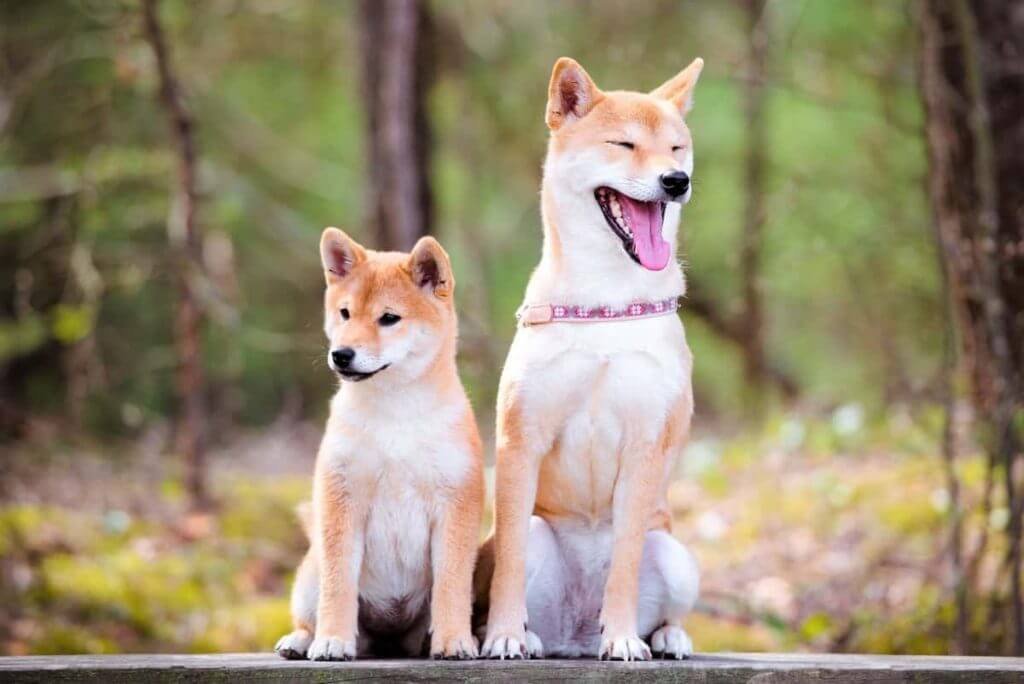
Types of Glaucoma found in Shiba Inu
There are two types of canine Glaucoma that can be found in Shiba Inu. They are Primary Glaucoma and Secondary Glaucoma.
Primary Glaucoma
Primary Glaucoma is a condition where fluids in the eye become too dry. It can also be caused if fluid is in excess amount. Primary Glaucoma occurs in Shiba Inu as a hereditary illness. It is an inherited condition that might arise in Shiba dogs. When primary Glaucoma is detected, pressure in Shiba Inu ranges between 25 – 30 mmHg.
Secondary Glaucoma
Secondary Glaucoma leads to an increase in eye pressure of you Shiba Inu as well as other dogs. Secondary Glaucoma is more serious as compared to primary Glaucoma. In this case, pressure in the eyes is approximately doubled as compared to the normal range. During secondary Glaucoma, eye pressure can range between 10-30mmHg.
How to detect Glaucoma in your Shiba Inu early?
To diagnose Glaucoma in Shiba Inu, your vet will need to take a close look at your dog’s eyes. Owners should look for glaucoma symptoms. It is known that the genes of parent Shiba are responsible for developing Glaucoma in many dogs. Shiba Inu, diagnosed with Glaucoma, should be taken to the eye doctor at the earliest. They will look for tell-tale signs such as redness, swelling, or fluid on the surface of the eye. Glaucoma can also cause blurred vision and sensitivity to light. Typical symptoms in a dog include watery eyes, runny eyes (water or mucus). Glaucoma does not usually lead to blindness in dogs, but it can make them more prone to seizures if left untreated. Glaucoma is often caused by trauma to the eye, but it can also occur spontaneously with no apparent reason or cause.
Glaucoma is very rare in Shiba Inu; less than 1% of all Shibas will be affected by Glaucoma in their lifetime. Glaucoma in Shibas tends to develop in middle-aged dogs, usually between 4 and 7; however, Glaucoma can develop at any age.
Glaucoma is often connected to high blood pressure in the eye, caused by many factors such as congenital Glaucoma or Glaucoma that is developed later in life. Glaucoma is the leading cause of blindness in dogs.
Treatment in the early stage is effective as early detection can reduce the chances of loss of vision in your dog. Glaucoma causes vision loss and can lead to blindness if left untreated. Glaucoma is treatable if the disease is caught early enough; it’s essential to be aware of any changes in your dog’s eyes, such as redness, swelling, or abnormal pupil sizes/iris color.
Glaucoma is diagnosed with a Glaucoma test in which your vet will look into your pet’s eyes. Glaucoma is manageable if it is treated regularly by eye drops or pills, but Glaucoma can not be cured at this time.
“To diagnose Glaucoma in Shiba Inus, your vet will need to take a close look at your dog’s eyes. Glaucoma causes complete vision loss and can lead to blindness if left untreated.”
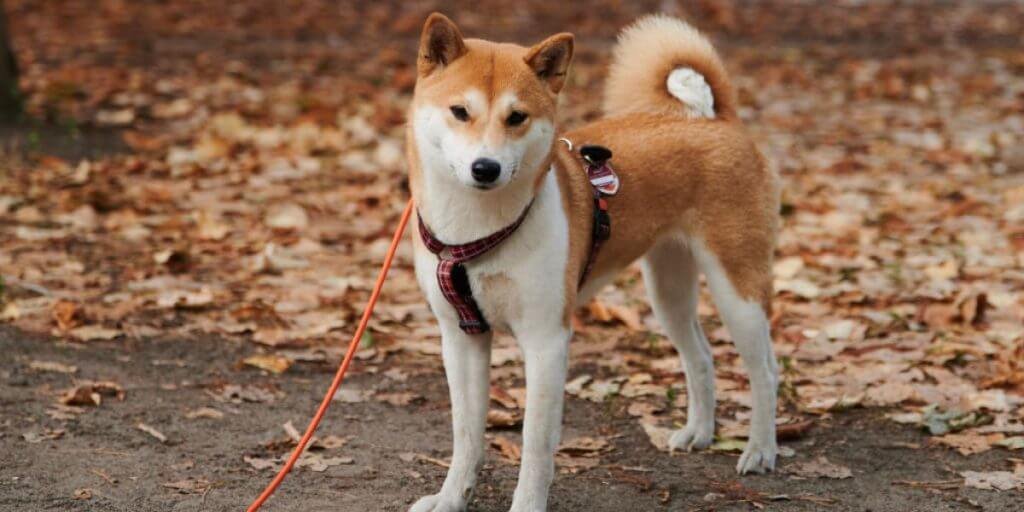
How is Glaucoma Examined?
The Glaucoma in Shiba is examined with a Glaucoma Exam. Glaucoma is tested by the Glaucoma test that includes Glaucoma Examination. The Glaucoma examination Glaucoma usually takes place in the Glaucoma Clinics, where Glaucoma examinations are provided.
Don’t let Glaucoma go untreated in your pet!
Shiba Inu glaucoma can be treated easily
As indicated by the Glaucoma Research Foundation, the signs of Glaucoma in dogs are as follows: Glaucoma is a disease that causes pressure to build upon the optic nerve and eventually leads to blindness. It can also cause permanent damage to the dog’s eye. To make sure this doesn’t happen, you should take your Shiba for an eye exam. You should visit a veterinary ophthalmologist where they can provide correct glaucoma medications for your dog.
There are various treatment options available for the treatment of Glaucoma in dog breeds. Glaucoma is typically diagnosed by an ophthalmologist and can be treated with drugs to lower intraocular pressure. The veterinarian can prescribe glaucoma eye drops. This can help in reducing fluid production and increase fluid drainage.
Glaucoma is vital and needs to be treated as soon as possible to slow down or even stop the progression. Glaucoma in Shiba Inus is not very common, but it can happen, so make sure you monitor for any signs of pain or vision loss, as well as changes in pupils (shrinking or enlarging). In most severe cases, there are chances of complete eye removal for the Shiba.
It’s clear that the dog is in a lot of pain, and it may be necessary to conduct surgery on its eyes. The vet will look for signs associated with vision loss before deciding whether or not they should perform this procedure at all since there could potentially be more damage done if we don’t get rid of Raynaud’s disease immediately!
Conclusion
When it comes to the health of your dog, there are many things you needn’t overlook. Glaucoma can lead to blindness and, if not detected early enough, could also cause pain in addition to or instead of vision loss–so be sure to monitor them closely! If anything seems off with their pupils (like shrinking/enlarging), then contact a vet immediately because these may indicate more serious issues like an infection that needs treatment right away before it’s too late.
Your Shiba may be more than just a cute companion! Glaucoma in dogs can be treated, but it’s important to recognize symptoms early and get treatment. If your dog is showing any of these signs– including redness or inflammation around the
the eye area, increased discharge from the eyes, pain when opening their lids, loss of appetite–you should contact an experienced veterinarian immediately.
If you suspect your dog has Glaucoma, contact an experienced veterinarian immediately. Glaucoma treatment varies depending on what stage the disease is currently at and how severe it may be, but several options are available, including medication and surgery.
Be sure to closely monitor your pet’s eye pressure regularly with a home test kit provided by your vet so that they will know when treatments become necessary.
Glaucoma doesn’t have to mean the end of your Shiba Inu’s life! Glaucoma in dogs can be treated, but it’s important to recognize symptoms early to help prevent further damage that could lead to blindness.
We want you and your pup to enjoy each other for as long as possible, so don’t hesitate with this severe condition!
